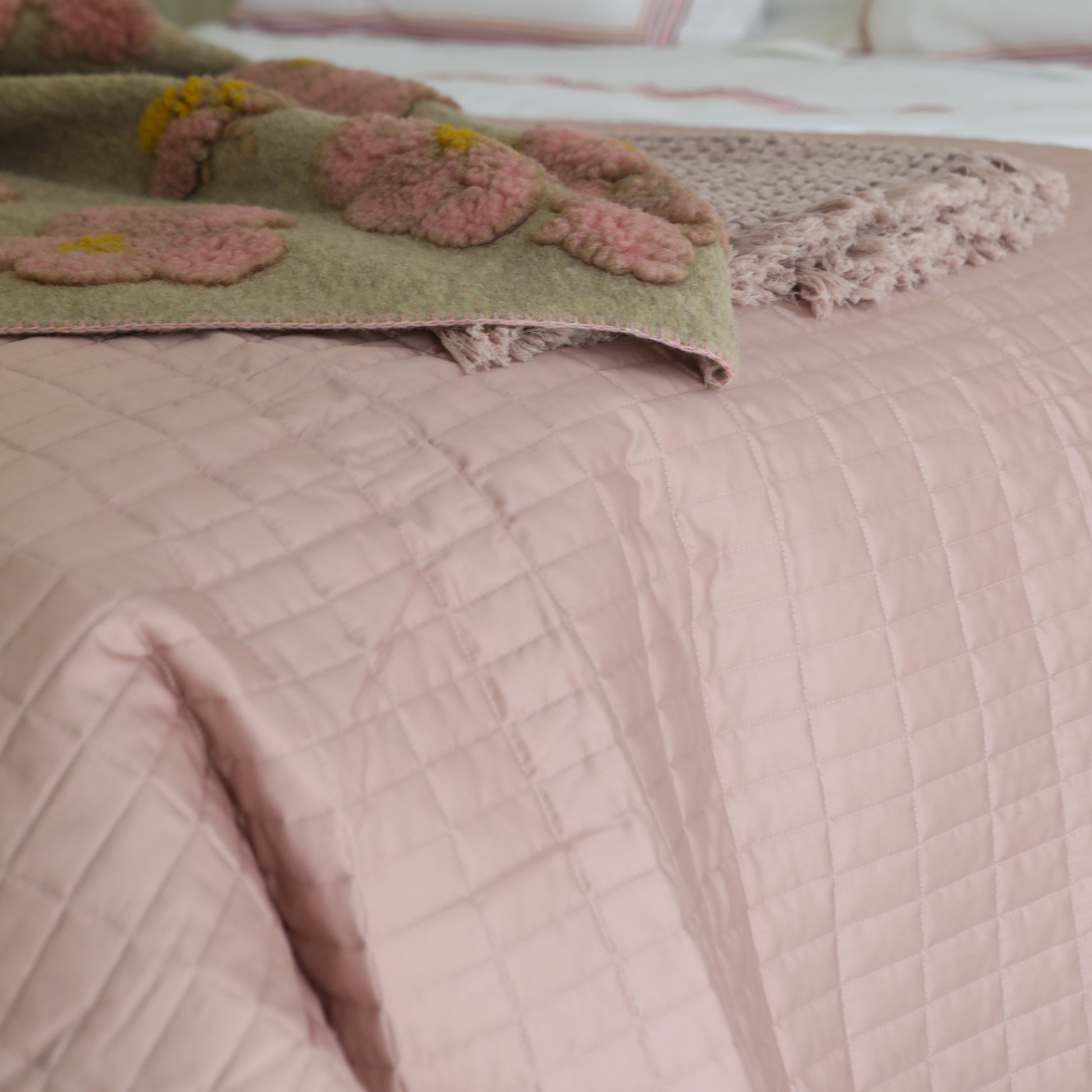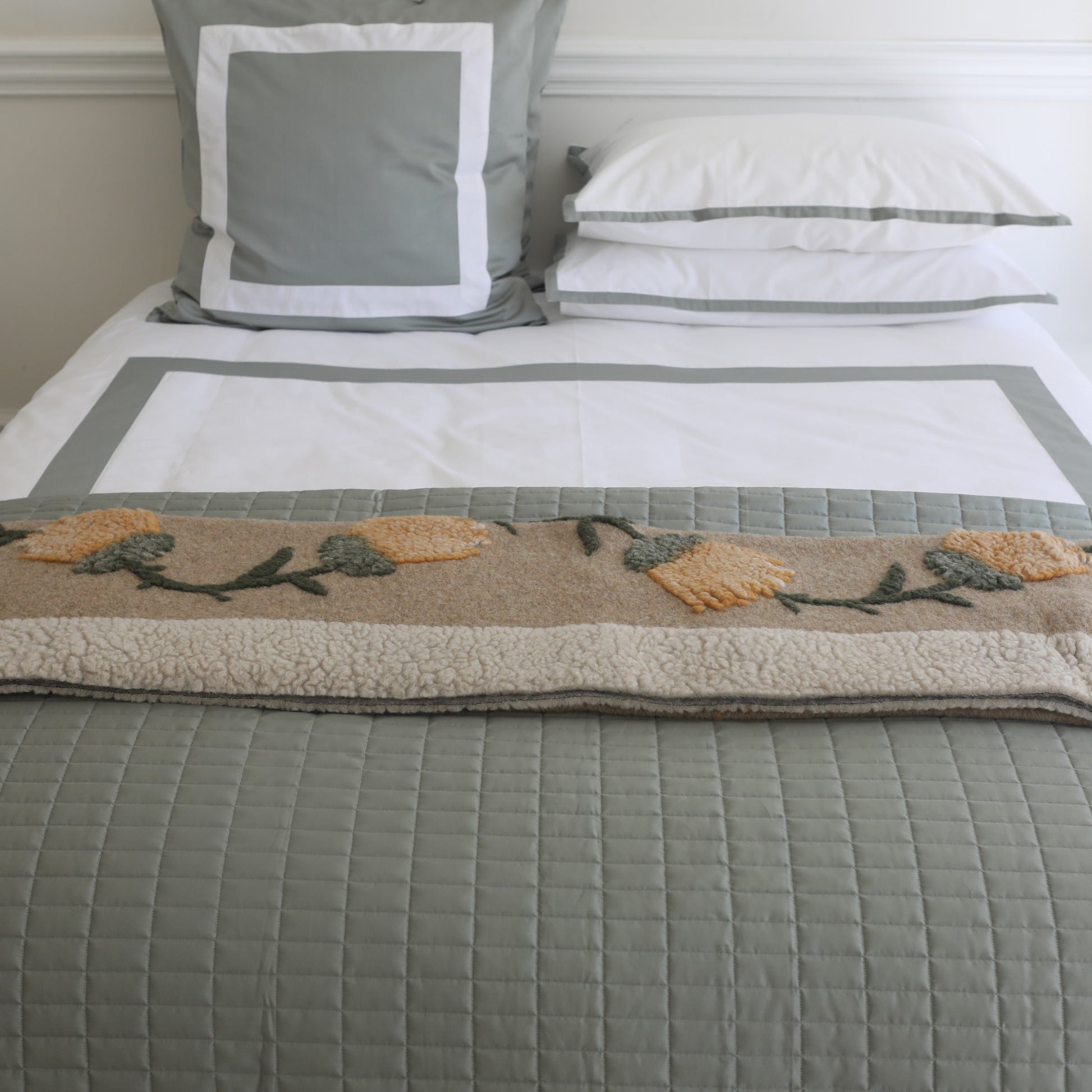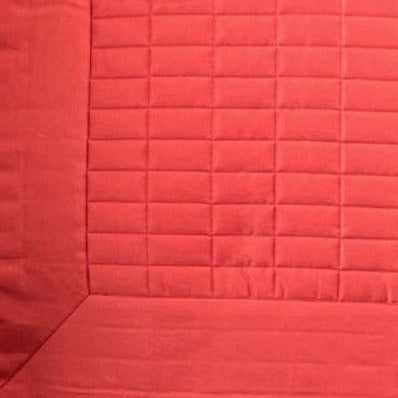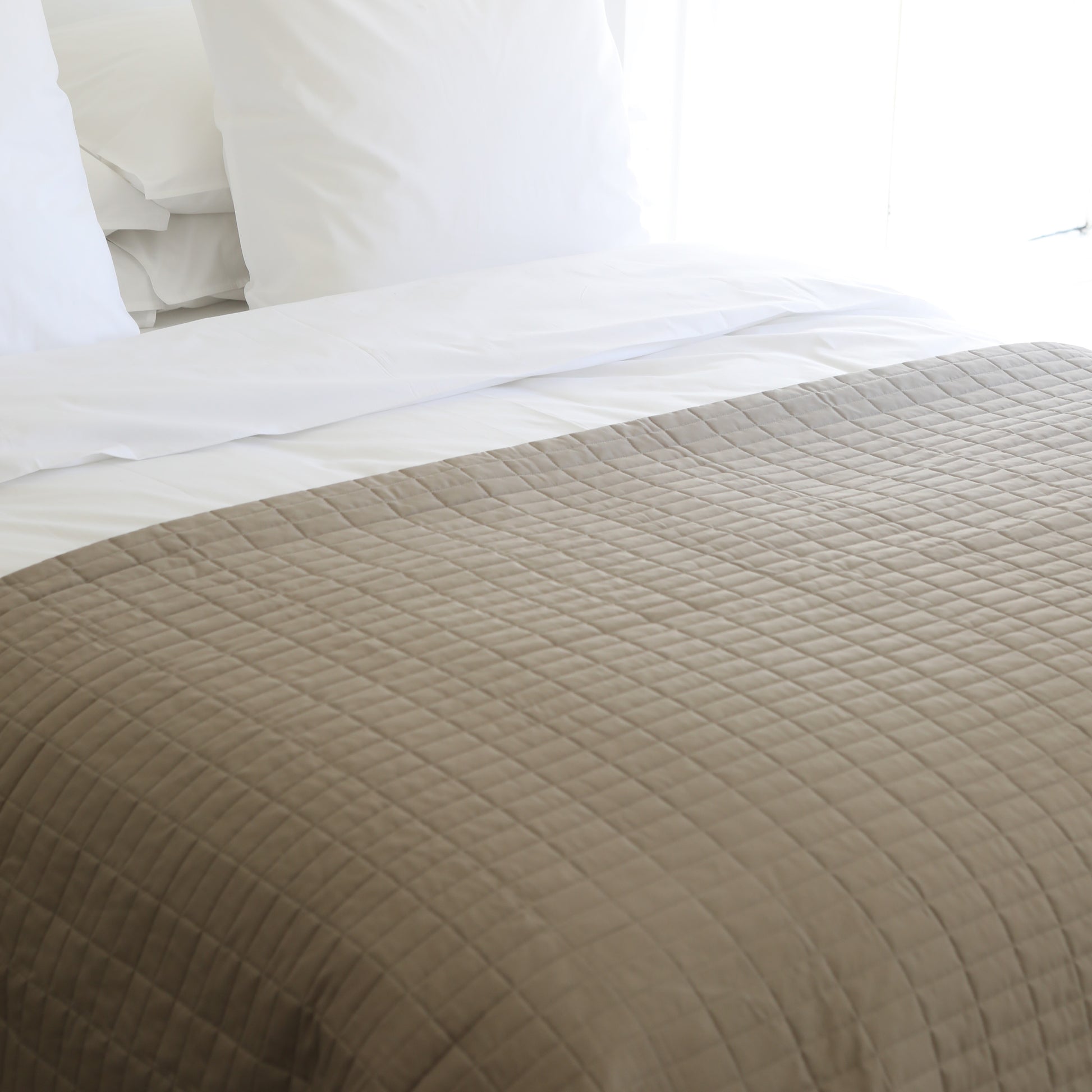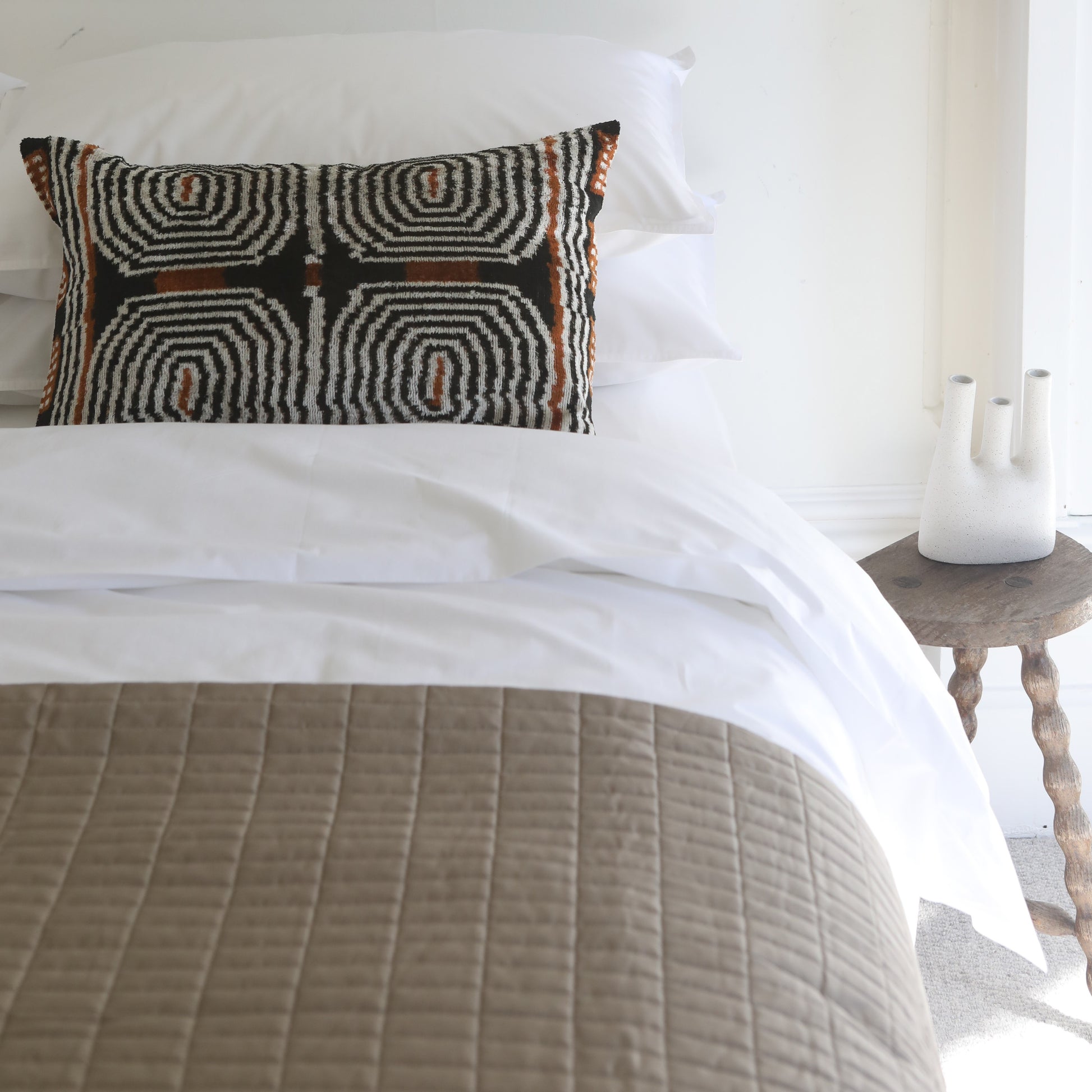Dormitory
Harrow Quilted Bedspread
Harrow Quilted Bedspread
Couldn't load pickup availability
A classic quilted bedspread in a lustrous sateen cotton which has a light layer of polyfill. Finished with a wide cuff and mitred corner it adds a tailored elegance to the bed and a gorgeous pop of colour. The turmeric and sage match with our Windsor bed linen colours
See More →
Size: 270x270cm
Fabric: 100% Italian woven Egyptian Cotton sateen 300 thread count with polyester fill and plain cotton reverse in the same colour
Fully Washable
Made in Italy
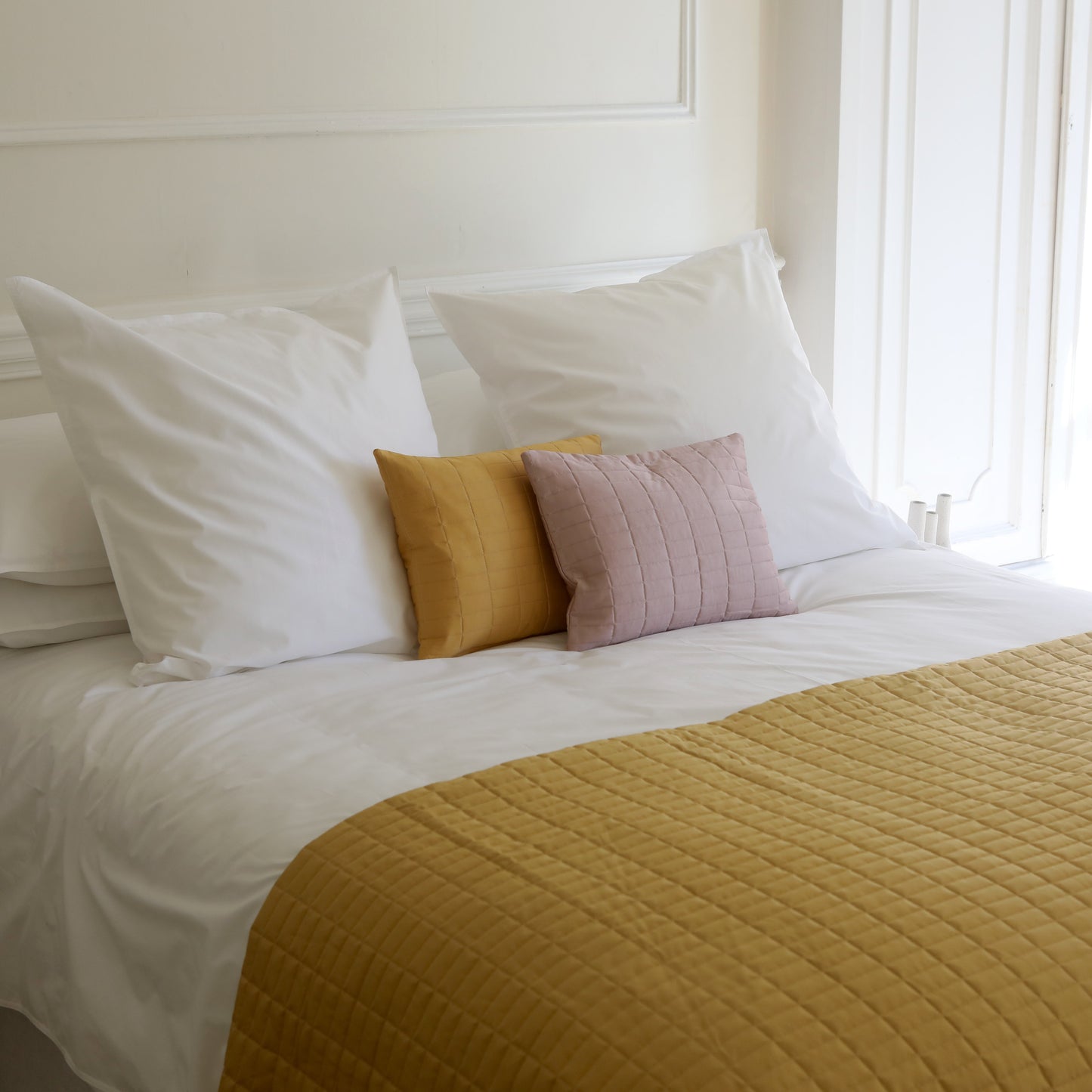
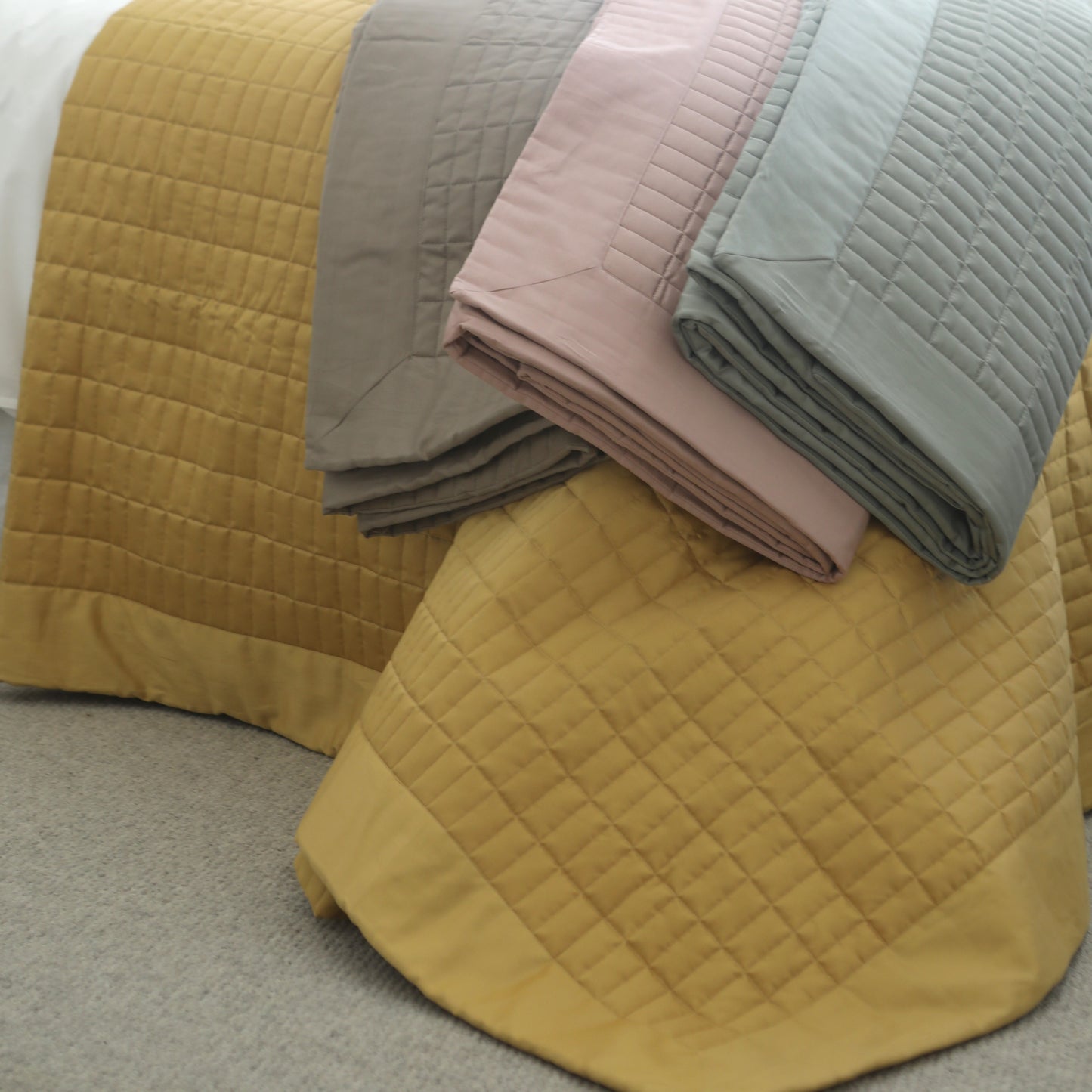
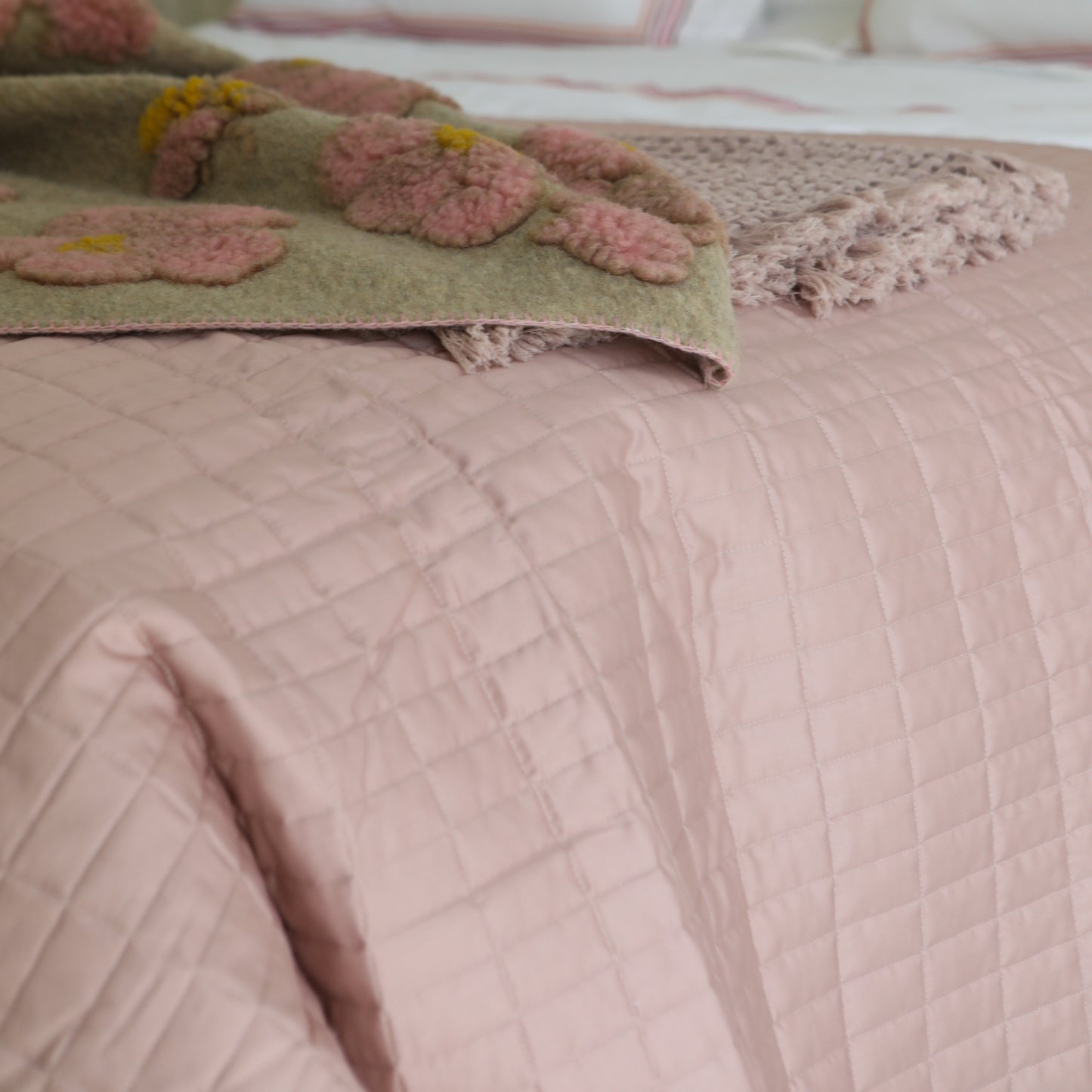
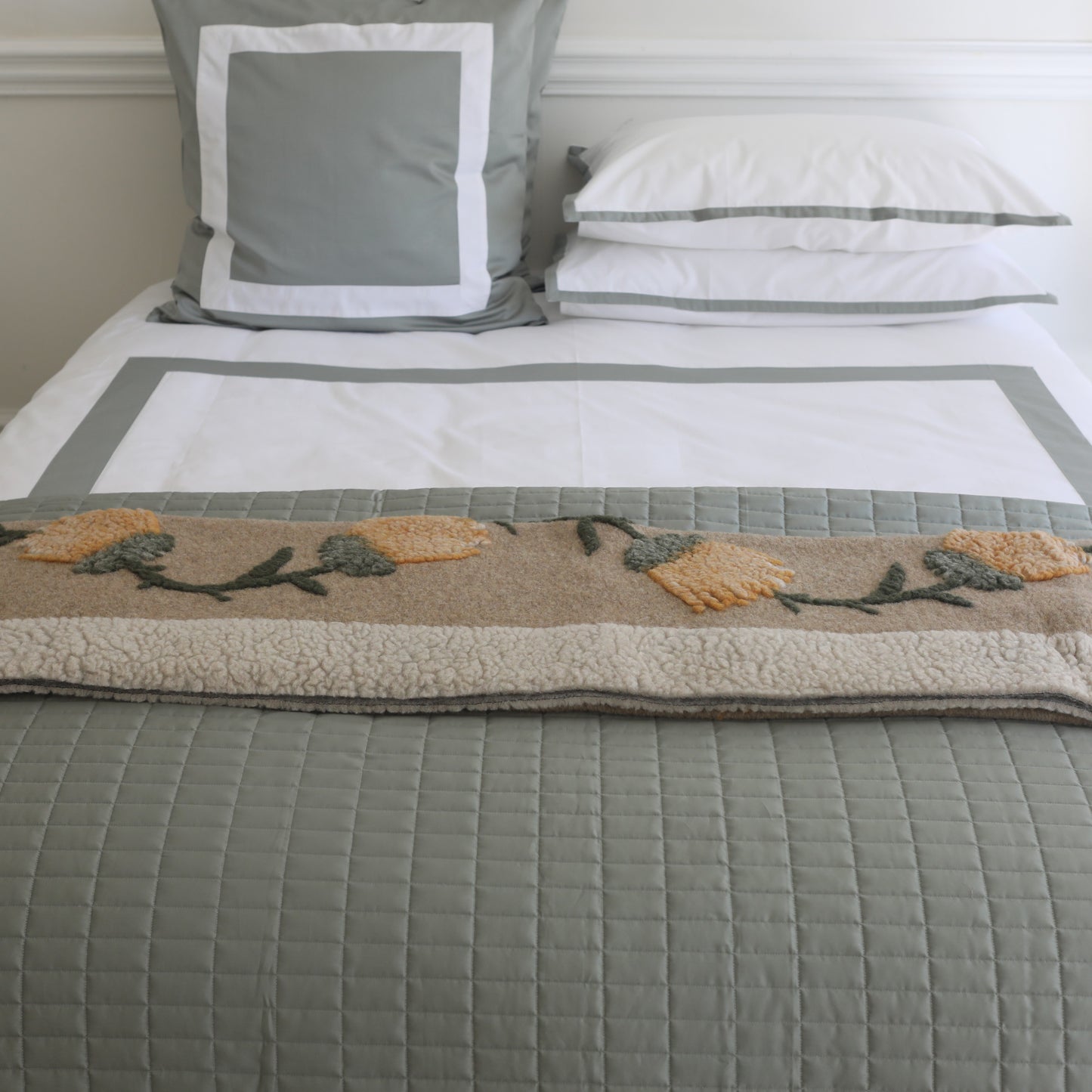

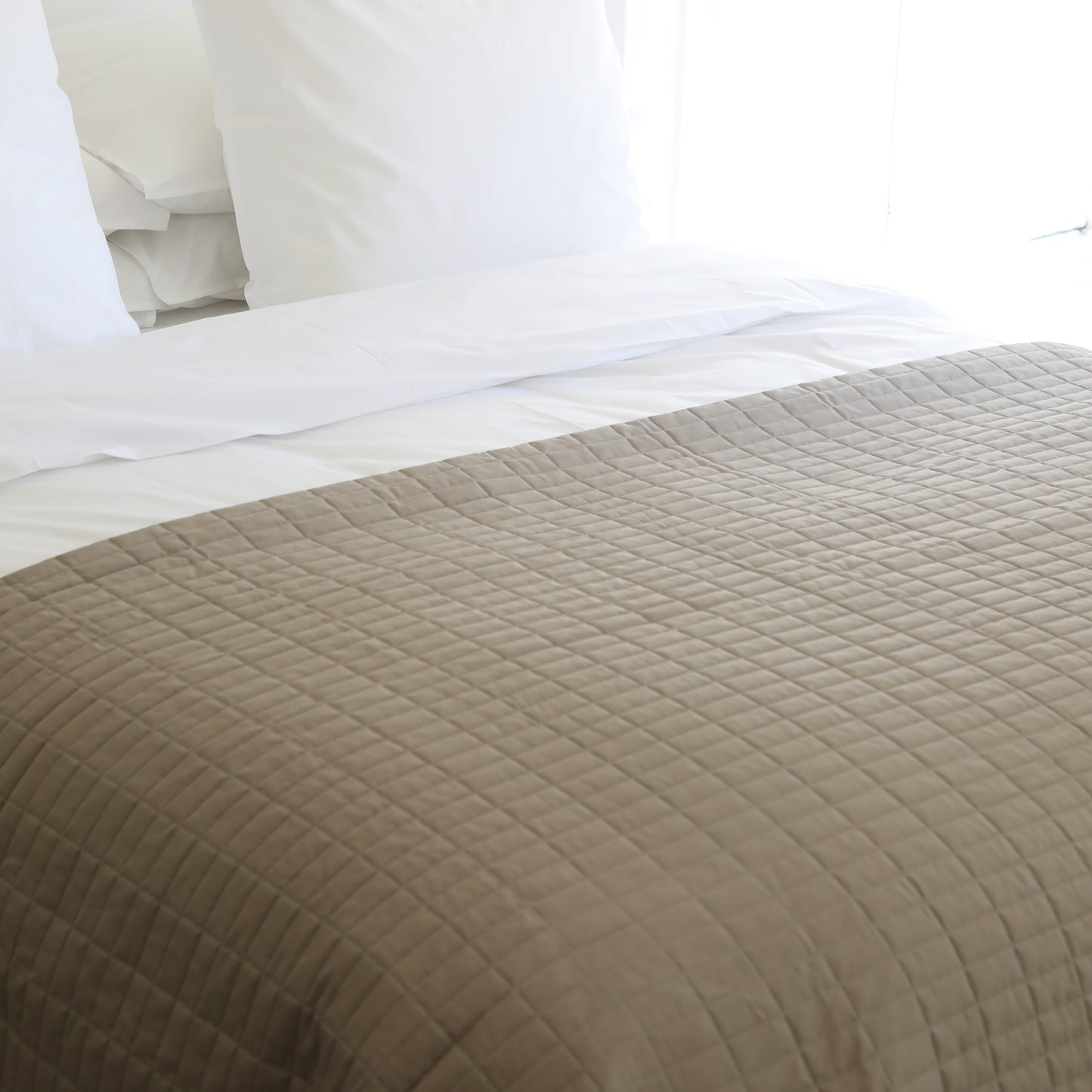
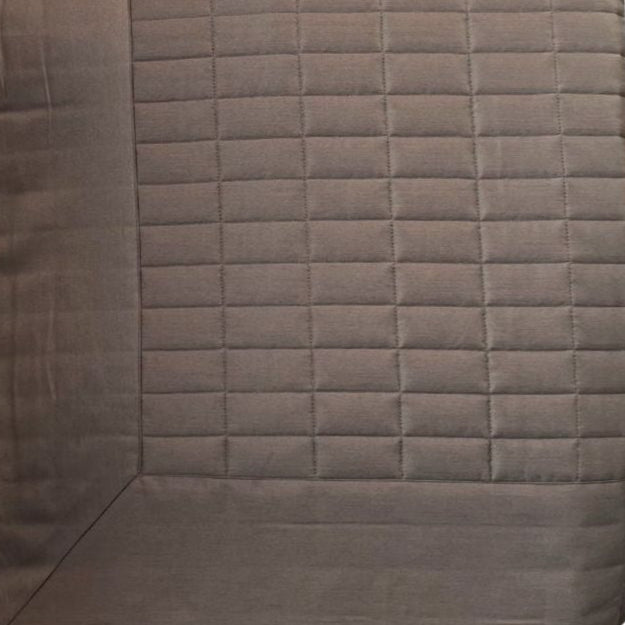
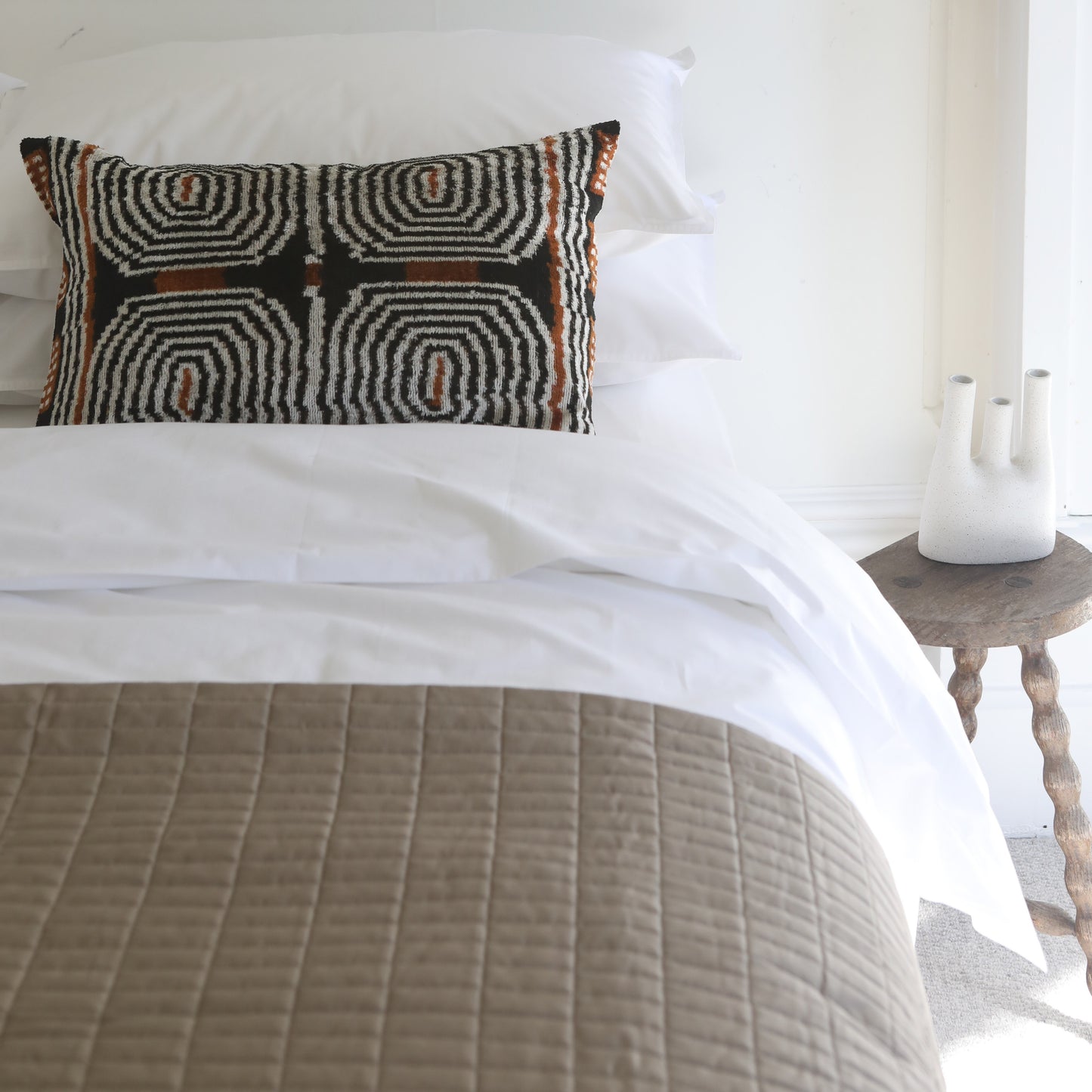
Bedlinen Sizes
Our stock sizes are designed for the UK measurements shown below. However, if you have a special or unusual size , we can make up whatever you require. Please contact us for a quote.
Please note that our fitted sheets come a very generous 40cm deep as standard.
Sheets and Duvet Covers
| Bed | Duvet Cover | Flat Sheet | Fitted Sheet | |
| Single |
90x190cm 3ft x 6ft 3" |
140x200cm 55x79" |
190x280cm 74x110" |
90x190cm 35x75" |
| Double |
140x200cm 4ft 6 x 6ft 3" |
200x200cm 79x79" |
240x280cm 91x110" |
140x190cm 95x75" |
| King |
150x200cm 5ft x 6ft 6" |
230x220cm 91x87" |
275x295cm 108x116" |
150x200cm 59x79" |
|
King
|
170 x 200cm 5ft 6” x 6ft 6"
|
|
|
170x200cm 67x79"
|
| Large King |
180x200cm 6ft x 6ft 6" |
260x220cm 102x87" |
180x200cm 72x79"
|
300x295cm 118x116" |
| Small Emperor |
200x200cm 6ft 6" x 6ft 6" |
290x235cm 118x92" |
205x205cm 81x81" |
|
| Large Emperor |
215x215cm 7ft x 7ft |
300x240cm 118x95" |
215x215cm 85x85" |
330x295cm 130x116" |
Pillows and Pillowcases
|
Standard |
50 x 75cm 20 x 30" |
|
King |
50 x 90cm 20 x 35" |
|
Square (French size) |
65 x 65cm 26 x 36" |
|
Boudoir |
30 x 40cm 12 x 18" |
bedlinen Buying Guide
Bed Linen Buying Guide
Waking up in high quality bedlinen is a supremely sumptuous and luxurious experience. The right bedding aids a restful night’s sleep leaving you refreshed and energised in the morning.
There are a lot of misconceptions about what makes quality bed linen so here are our pointers for what to look for:
Cloth
Quality bed linen starts with quality fabric which means quality yarn.
Natural fibres are important as this will ensure a fabric that is breathable, responding to temperature and humidity and so creating a comfortable environment for the body whatever the season. This could be cotton, linen or micro-modal.
Not all cotton is equal, there are many varying qualities. Egyptian cotton is a unique genus (type) of cotton that grows primarily in Egypt. This is not the same as cotton that just comes from, or has been processed in Egypt as it has a much longer staple (fibre) which ensures a smooth and strong cloth. Buyer beware: A great deal of Egyptian cotton on the market is in fact inferior Asian cotton that has merely been processed in Egypt so check the small print.
Linen has quite a different handle to cotton. It is generally heavier and can be a coarser cloth which is strong, absorbent and will soften over time and with washing.
Micromodal is incredibly absorbent making it particularly good in hot climates or for those who perspire during the night although its softness and silkiness also give it a cosy feel in colder weather. It has a high sheen so is often selected as an alternative to silk which can be difficult to care for.
Thread Count
What is the thread count? is probably the most asked question when buying bed linen. However, the truth is that thread count is only one measure in gauging quality. It will only tell you how many threads are in a square inch (or centimetre) of fabric thus expressing how densely woven the cloth is.
A very high thread count will be produced using twisted yarns which may or not be of a high quality themselves. As such, it is quite possible for a well made 200tc to be better than a cheaper 600tc.
Weave
Yarn can be woven into either a percale or sateen finish and it is very much a personal preference as to which you choose. Percale is smooth crisp and cool, whilst sateen has a high sheen and, some think, a warmer touch. Whilst sateen has a beautiful lustre, percale is, undoubtably, stronger and more robust so for hotels or environments where there will be intense laundering this may be preferable.
Finish & Handle
As well as the aesthetic appeal, look at the quality of the finish, the hemming, the quality of the stitching. If you hold it up to the light can see through it? If so, then it’s too thin. How does it feel to the touch?
In the end buying is very much a matter of personnel choice. Trust your own judgement and feel the cloth with your own hands.
Selection
We recommend having at least three sets of linen per bed: One on the bed, one in the ash and one in the cupboard. This ensures each set a rest from use and wash. Similarly, we would suggest that sets are washed together (soiled or not) to ensure that colour and brightness stay consistent.
We are always happy to answer any queries you might have or, give advice if you are still unsure what to go for. Please do call us on 01273 681844 or email sales@dormitoryuk.com
Care of Cotton
Our bedlinens are made from the finest fabrics and finished to the highest standards and in order to retain this quality for many years it is important to follow these few simple steps.
Washing
Always wash white and coloured items separately and follow the stitched in washing instructions. To keep colours true for as long as possible it is important not to use washing powders or detergents containing optical brighteners.
Do not apply detergent (either powder or liquid) directly onto the fabric, but ensure it is fully dissolved before immersing the items to be washed.
We recommend very sparing use of fabric conditioners. These products coat the fibres of a fabric and repeated application or excessive quantity can result in a build up of residue. This will mean the linens becoming hard to the touch and less supple.
Separate linens from other items in the wash, especially those containing polyester, which can create pilling or “bobbling” of the cotton fabric. Do not wash your linens with items with zips or hooks as these can catch on and damage the fabric or stitching.
Be aware that many beauty products today can have detrimental effects on fabrics as they contain bleaching agents. Whitening toothpastes, some cleansers and face creams can cause permanent colour loss.
Drying & Ironing
You can tumble dry most bedlinens on low heat, but be sure to check the care label. Shake out damp linens before placing in dryer. Remove from dryer promptly while slightly damp to minimize wrinkles.
Use a steam iron on a warm/hot setting for cotton. To iron embroidered bedlinen, iron them on the reverse side to preserve the three-dimensional effect of the embroidery. Use a pressing cloth to protect delicate lace and cutwork. Sateen linens are refreshed by ironing on the reverse side, restoring the lustrous face of the weave.
Storage
Bedlinen should be stored in a dry, well-ventilated area. Linens stored long-term should be wrapped in white cotton, muslin (old pillow cases work well) or acid free tissue paper. Avoid storing linens in plastic bags or boxes, which can cause permanent yellowing; natural fibres need to “breathe.” Cedar chests can also result in fabrics becoming yellow or streaked. Adding a scented linen liner or moth-away sachet will not only help keep the linens fresh smelling and ready to use but will also keep the dreaded moth away from your cupboards.
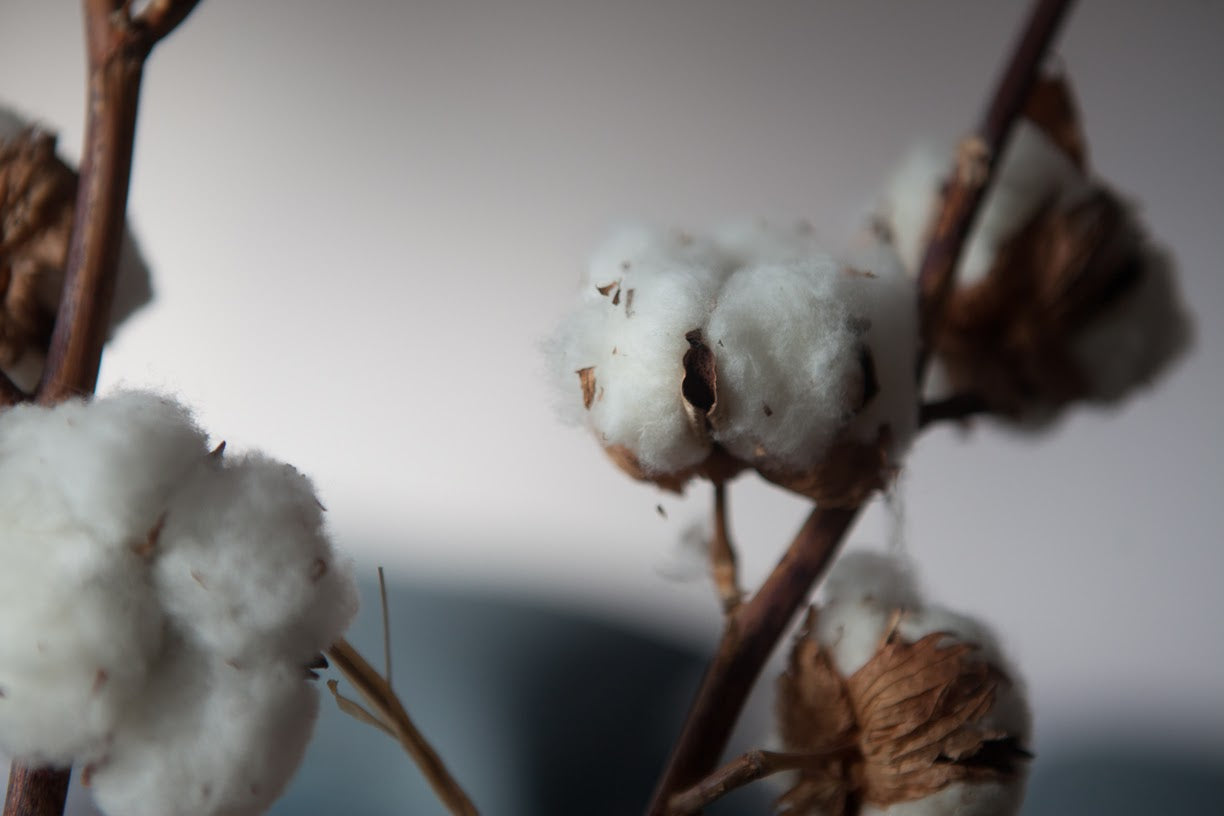
Natural Cotton
Fine cotton really makes a difference to the quality of your sleep. We buy all of our cotton from Italy, woven and finished to exacting European standards. Invest in the best to ensure perfect slumber.



